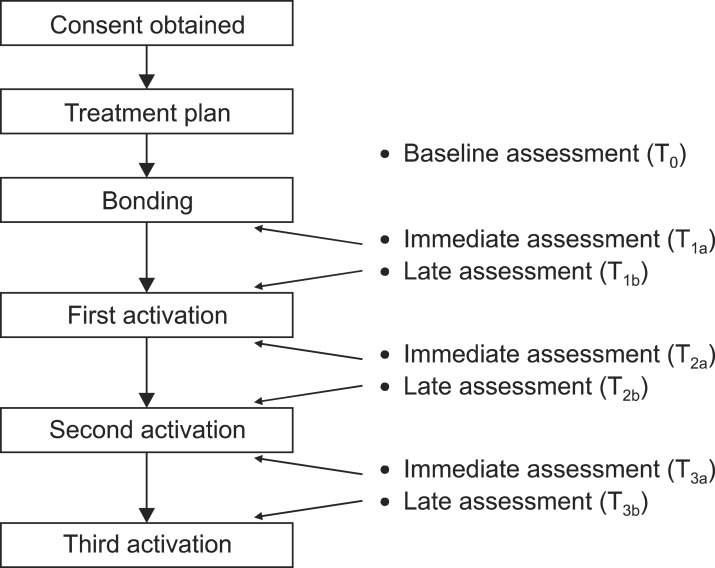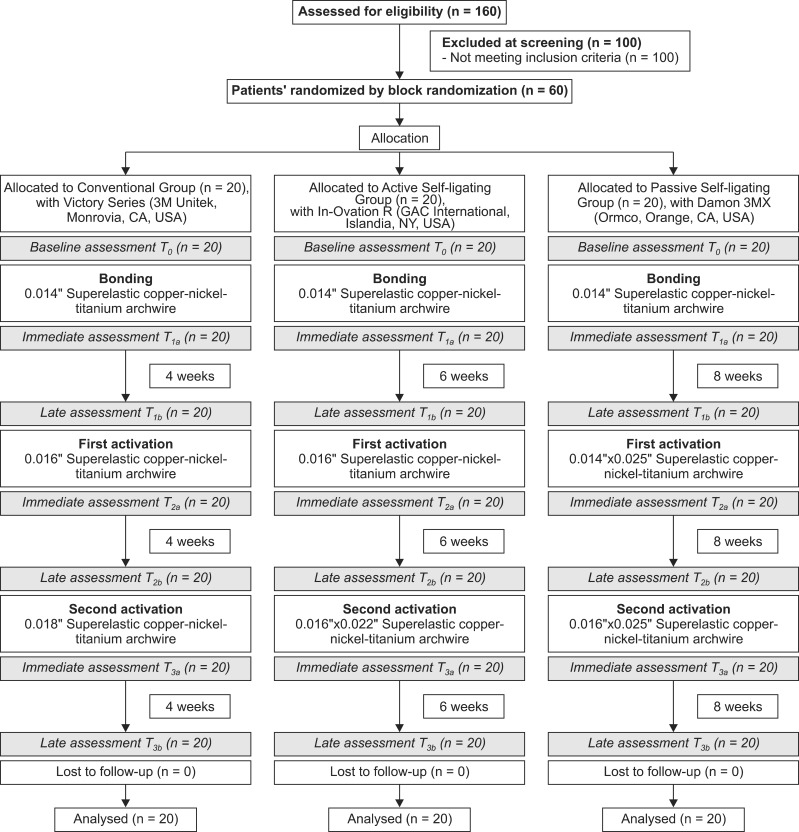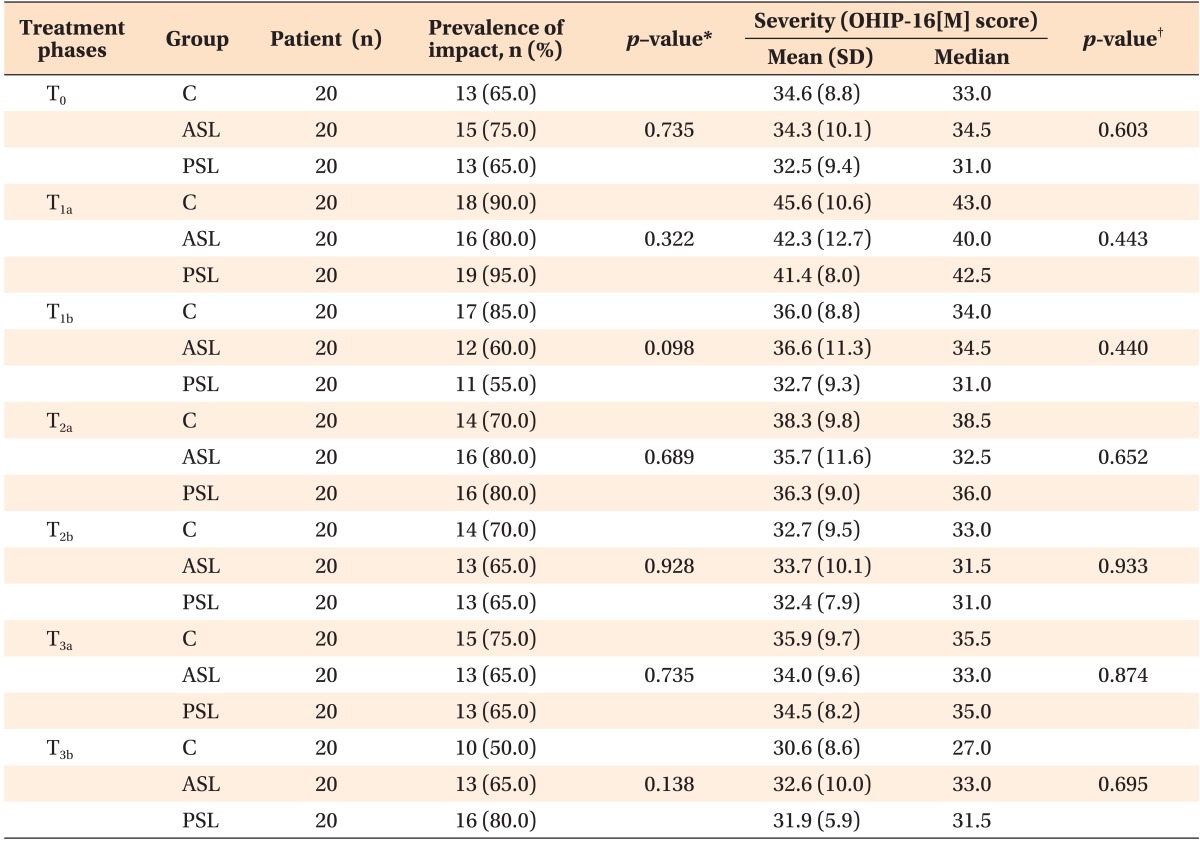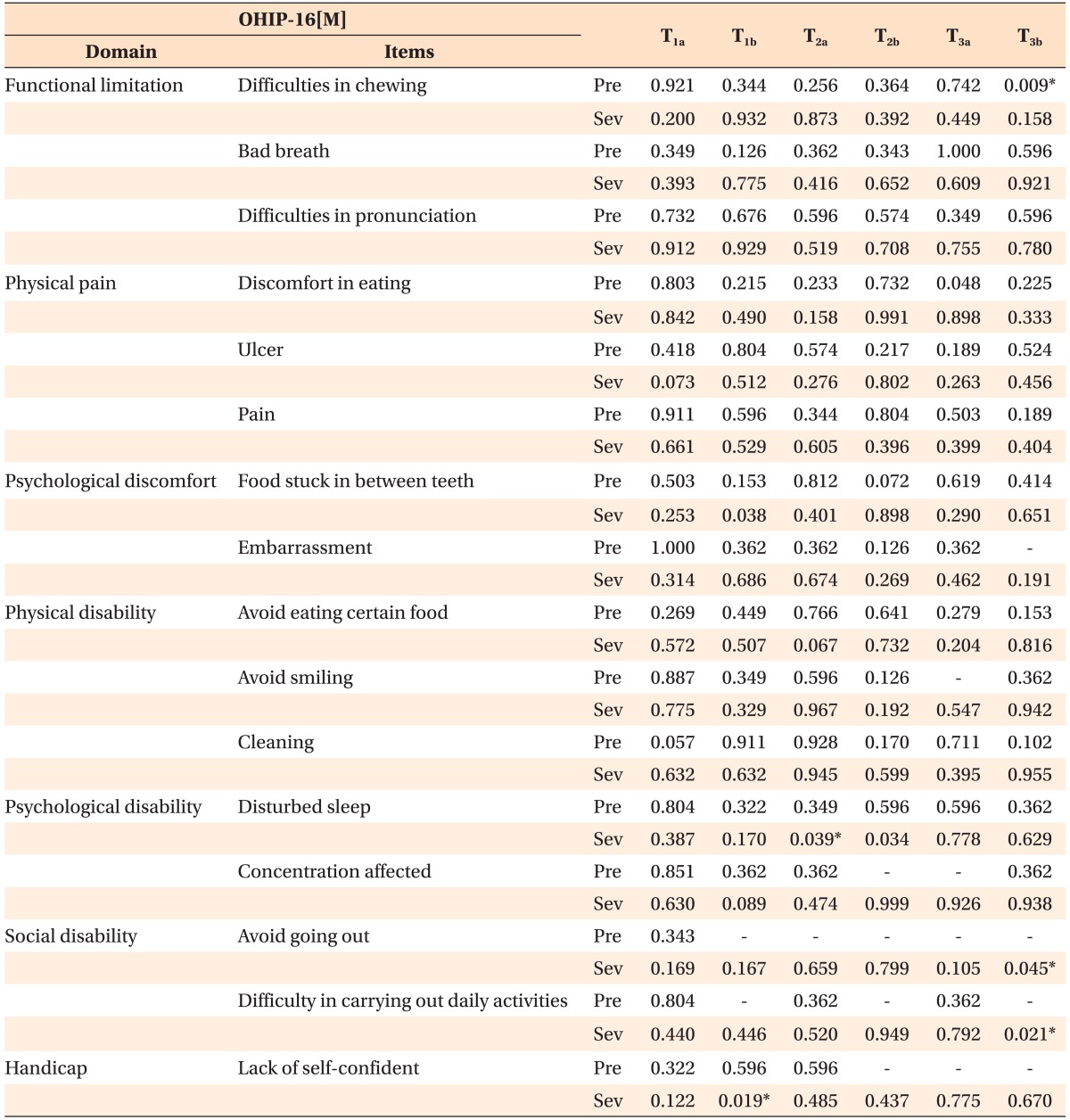1. Cunningham SJ, Hunt NP, Feinmann C. Psychological aspects of orthognathic surgery: a review of the literature. Int J Adult Orthodon Orthognath Surg. 1995; 10:159–172. PMID:
9082004.
2. Schmidt A, Ciesielski R, Orthuber W, Koos B. Survey of oral health-related quality of life among skeletal malocclusion patients following orthodontic treatment and orthognathic surgery. J Orofac Orthop. 2013; 74:287–294. PMID:
23807255.

3. Bellot-Arcís C, Montiel-Company JM, Almerich-Silla JM. Psychosocial impact of malocclusion in Spanish adolescents. Korean J Orthod. 2013; 43:193–200. PMID:
24015389.

4. Cunningham SJ, O'Brien C. Quality of life and orthodontics. Semin Orthod. 2007; 13:96–103.

5. O'Brien K, Kay L, Fox D, Mandall N. Assessing oral health outcomes for orthodontics--measuring health status and quality of life. Community Dent Health. 1998; 15:22–26. PMID:
9791611.
6. Read-Ward GE, Jones SP, Davies EH. A comparison of self-ligating and conventional orthodontic bracket systems. Br J Orthod. 1997; 24:309–317. PMID:
9459030.

7. Harradine NW. Self-ligating brackets and treatment efficiency. Clin Orthod Res. 2001; 4:220–227. PMID:
11683811.

8. Khambay B, Millett D, McHugh S. Evaluation of methods of archwire ligation on frictional resistance. Eur J Orthod. 2004; 26:327–332. PMID:
15222719.

9. Turnbull NR, Birnie DJ. Treatment efficiency of conventional vs self-ligating brackets: effects of archwire size and material. Am J Orthod Dentofacial Orthop. 2007; 131:395–399. PMID:
17346597.

10. Eberting JJ, Straja SR, Tuncay OC. Treatment time, outcome, and patient satisfaction comparisons of Damon and conventional brackets. Clin Orthod Res. 2001; 4:228–234. PMID:
11683812.

11. Miles PG. SmartClip versus conventional twin brackets for initial alignment: is there a difference? Aust Orthod J. 2005; 21:123–127. PMID:
16429868.
12. Tecco S, DAttilio M, Tetè S, Festa F. Prevalence and type of pain during conventional and self-ligatingorthodontic treatment. Eur J Orthod. 2009; 31:380–384. PMID:
19465738.
13. Fleming PS, Dibiase AT, Sarri G, Lee RT. Pain experience during initial alignment with a self-ligating and a conventional fixed orthodontic appliance system. A randomized controlled clinical trial. Angle Orthod. 2009; 79:46–50. PMID:
19123718.
14. Fleming PS, Johal A. Self-ligating brackets in orthodontics. A systematic review. Angle Orthod. 2010; 80:575–584. PMID:
20050755.
15. Kohli SS, Kohli VS. Patient pain experience after placement of initial aligning archwire using active and passive self-ligating bracket systems: a randomized clinical trial. Orthodontics (Chic.). 2012; 13:e58–e65. PMID:
22567655.
16. Liu Z, McGrath C, Hägg U. Associations between orthodontic treatment need and oral health-related quality of life among young adults: does it depend on how you assess them? Community Dent Oral Epidemiol. 2011; 39:137–144. PMID:
21210961.

17. Saub R, Locker D, Allison P. Derivation and validation of the short version of the Malaysian Oral Health Impact Profile. Community Dent Oral Epidemiol. 2005; 33:378–383. PMID:
16128798.

18. Locker D, Quiñonez C. Functional and psychosocial impacts of oral disorders in Canadian adults: a national population survey. J Can Dent Assoc. 2009; 75:521. PMID:
19744362.
19. Fayers PM, Machin D. Quality of Life: assessment, analysis and interpretation. Chichester: John Wiley and Sons Ltd;2000.
20. Saub R, Locker D. The impact of oral conditions on the quality of life of the Malaysian adult population: preliminary results. Med J Malaysia. 2006; 61:438–446. PMID:
17243521.
21. Major TW, Carey JP, Nobes DS, Major PW. Orthodontic bracket manufacturing tolerances and dimensional differences between select self-ligating brackets. J Dent Biomech. 2010; 2010:781321. PMID:
20981299.
22. Krishnan V. Orthodontic pain: from causes to management--a review. Eur J Orthod. 2007; 29:170–179. PMID:
17488999.

23. Crawford NL, McCarthy C, Murphy TC, Benson PE. Physical properties of conventional and Super Slick elastomeric ligatures after intraoral use. Angle Orthod. 2010; 80:175–181. PMID:
19852658.

24. Ngan P, Kess B, Wilson S. Perception of discomfort by patients undergoing orthodontic treatment. Am J Orthod Dentofacial Orthop. 1989; 96:47–53. PMID:
2750720.

25. Jones M, Chan C. The pain and discomfort experienced during orthodontic treatment: a randomized controlled clinical trial of two initial aligning arch wires. Am J Orthod Dentofacial Orthop. 1992; 102:373–381. PMID:
1456222.
26. Erdinç AM, Dinçer B. Perception of pain during orthodontic treatment with fixed appliances. Eur J Orthod. 2004; 26:79–85. PMID:
14994886.
27. Zhang M, McGrath C, Hägg U. Changes in oral health-related quality of life during fixed orthodontic appliance therapy. Am J Orthod Dentofacial Orthop. 2008; 133:25–29. PMID:
18174067.

28. Masood Y, Masood M, Zainul NN, Araby NB, Hussain SF, Newton T. Impact of malocclusion on oral health related quality of life in young people. Health Qual Life Outcomes. 2013; 11:25. PMID:
23443041.

29. Rusanen J, Lahti S, Tolvanen M, Pirttiniemi P. Quality of life in patients with severe malocclusion before treatment. Eur J Orthod. 2010; 32:43–48. PMID:
19726489.

30. Roscoe JT. Fundamental research statistic for the behavioral sciences. 2nd ed. New York: Holt, Rinehart and Winston;1975.




 PDF
PDF ePub
ePub Citation
Citation Print
Print








 XML Download
XML Download